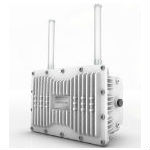 Global small cell revenue will triple by 2022, according to new research from Mobile Experts. According to Mobile Experts’ definition, small cells extend down to residential femtocells. Researchers expect the market to grow at an a compound annual growth rate (CAGR) of around 17 percent from 2016-2022, with annual revenue tripling to exceed $4.5 billion by the end of the period.
Global small cell revenue will triple by 2022, according to new research from Mobile Experts. According to Mobile Experts’ definition, small cells extend down to residential femtocells. Researchers expect the market to grow at an a compound annual growth rate (CAGR) of around 17 percent from 2016-2022, with annual revenue tripling to exceed $4.5 billion by the end of the period.
Growth in the carrier and enterprise small cell market segment will set the pace, according to the market research company, which forecasts the carrier and enterprise segments will grow at a CAGR of more than 30 percent from 2016-2022.
The rising volume of traffic coursing over wireless carriers’ expanding 4G LTE broadband network footprints underpins and is fueling the need for improved wireless and mobile network coverage, particular in large, densely populated urban centers. Network traffic density is exceeding 1 Gbps/km2 among carriers with broad-based LTE coverage, the market research provider points out.
Global Market Trends
Global LTE connections rose to 1.9 billion in 4Q 2016 and breached the 2 billion connection mark in February, according to the latest market data from 5G Americas via Ovum Research.
North America boasts nearly 300 million LTE subscribers, as well as some of the highest 4G LTE penetration rates, network coverage and market share among world regions, the global industry association highlights.
“Overall, the small cell market is evolving rapidly. CPRI (Common Public Radio Interface) will be giving way to split-baseband architectures,” commented Mobile Experts’ senior analyst Kyung Mun. “Small cells will become an integral part of mobile networks as operators make the move toward hyper-dense networks with 5G services. We’re optimistic that this upward trend will continue—and we’ll be tracking the continued progress carefully.”
Wireless carriers are turning to a mix of technologies to cope with and better manage rapidly rising mobile network traffic volumes, Mobile Experts adds. That includes FDD/TD-LTE, LTE-U/LAA, LWA, CBRS and even Carrier Wi-Fi.
Regarding vendors, large multinational small cell manufacturers such as Ericsson, Huawei and Nokia are taking larger shares of the carrier outdoor small cell market. Smaller niche vendors, such as Spidercloud and Airspan, are having success in the enterprise and indoor small cell market segments within several Tier 1 network operator customer bases.


